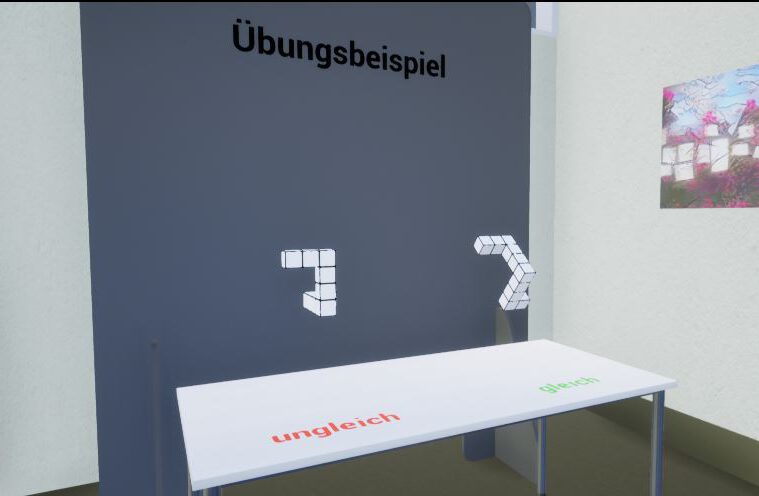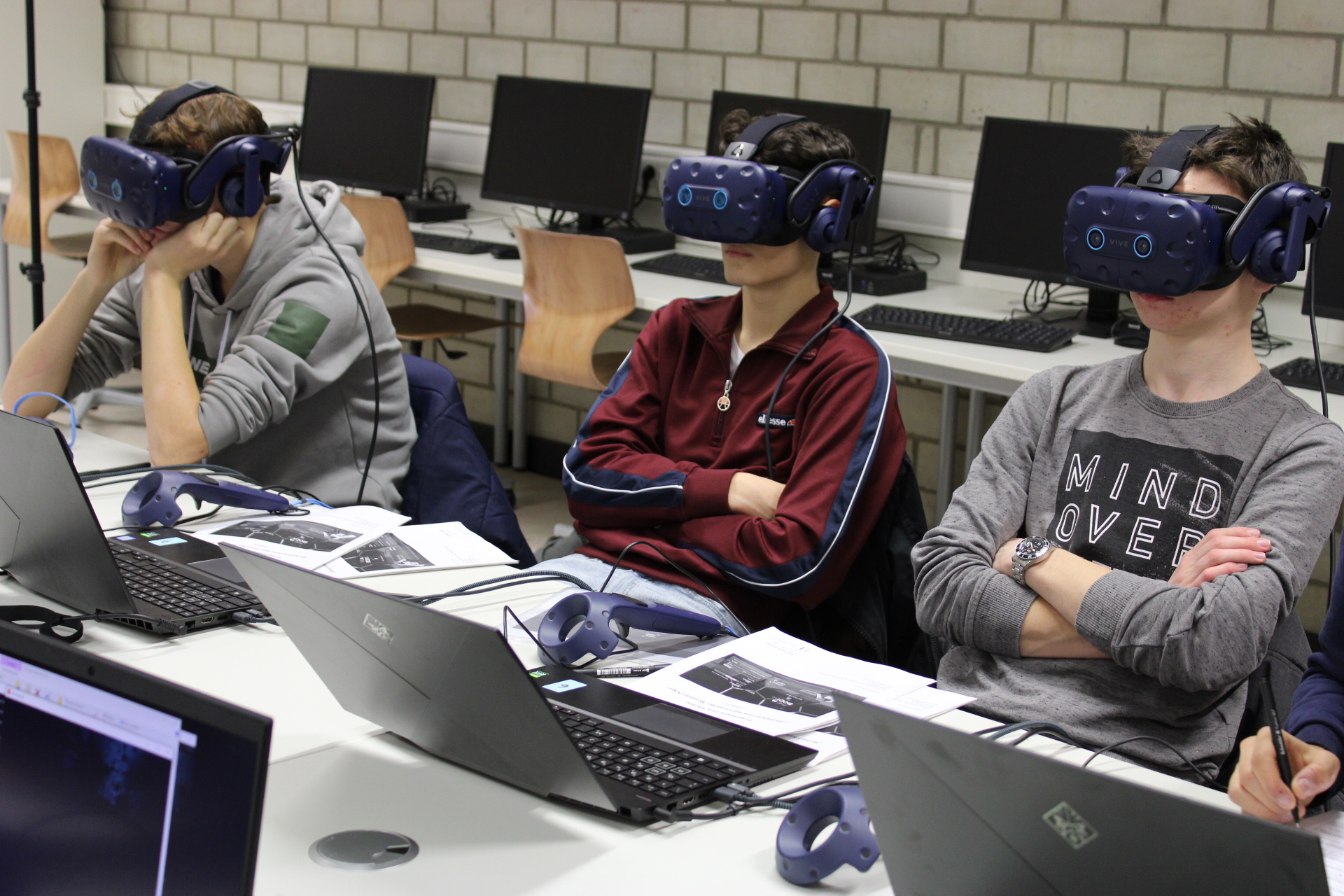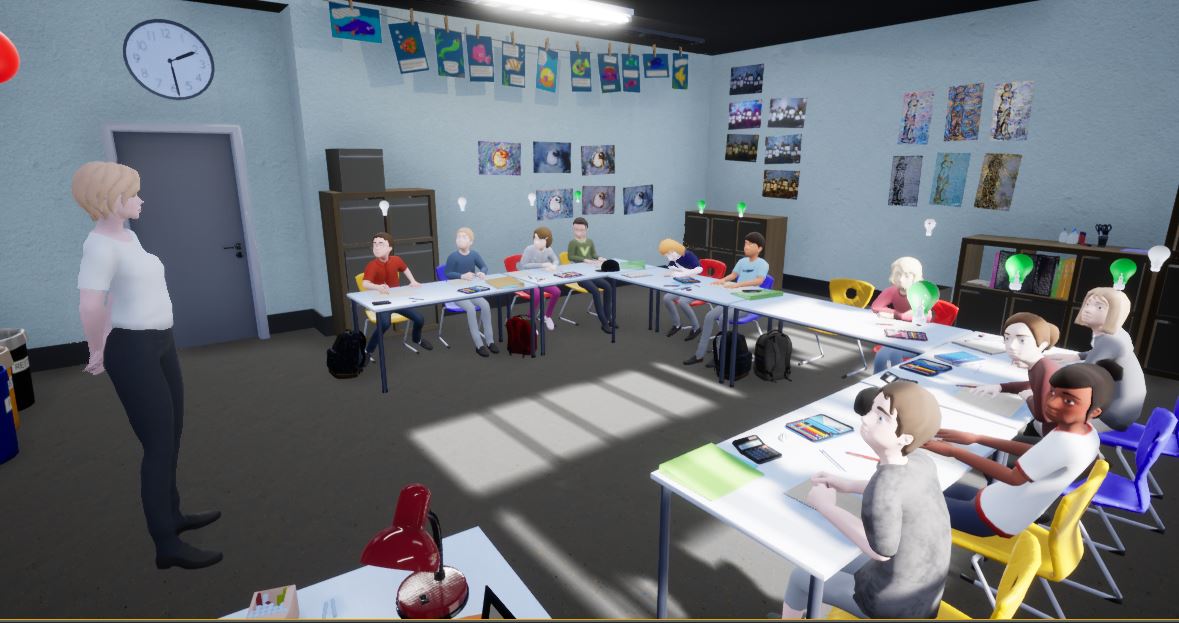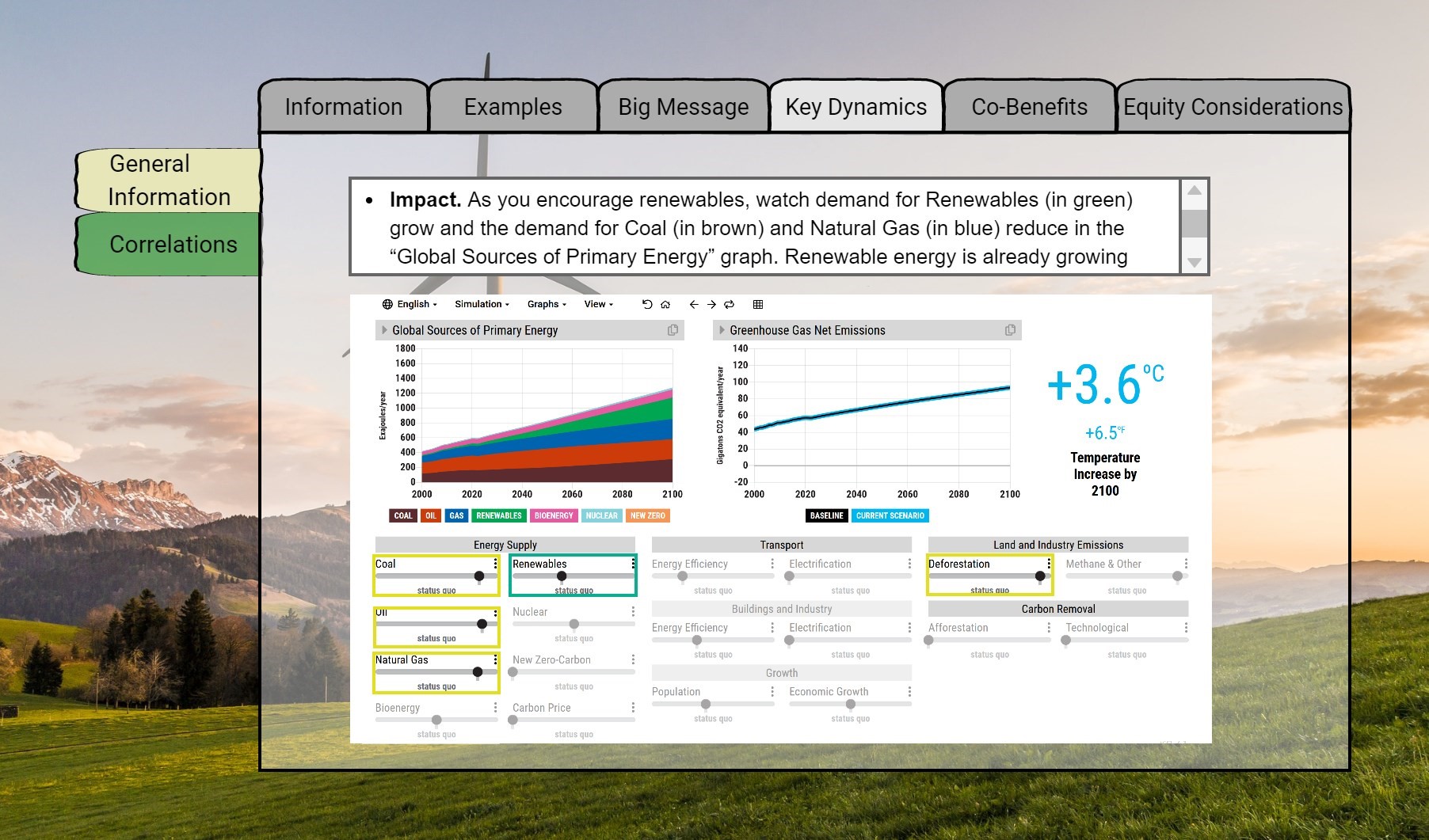Our Research Projects
Social Comparisons

We compare ourselves to other people all the time. So do students with their peers – and these comparisons affect how they evaluate their own abilities. However, how exactly social comparisons in the classroom proceed is largely unclear. The social comparison project sheds light on this question with the help of an immersive virtual reality classroom.

Teacher-student interaction processes are complex and characterized by simultaneity, multidimensionality, and immediacy. Existing research on the development of teachers’ ability to perceive relevant cues in the classroom during instruction, is typically lacking either authenticity or controllability. VirATeC aims to combine both with latest technology: immersive virtual reality.
Mental Rotation

Testing people’s spatial ability and investigating their underlying cognitive processes by using immersive virtual reality as a virtual experimental environment. We are not only able to display realistically rendered object to extend the testing framework but also provide additional insights by analysing eye-tracking data of participants.
BioBodyVR

This project examined how VR’s effectiveness in science education can be enhanced by providing students relevant information about VR’s usefulness for teaching and learning. Particularly, we assessed how such an experimental approach could support students‘ effective learning of biology in the virtual learning environment.
Bisection Classroom

Learning mathematical competencies in a virtual classroom can help to understand under which context learning is successful. How much attention should the teacher give the student and how much distraction of peer learners is too much? The Bisection Classroom is our latest development ready to be tested. More information coming soon.
Climate Education Simulation

The Climate Education Simulation (CES) offers students the possibility to learn about different factors involved in climate change and effective mitigation strategies. More importantly, students will be able vary and control these factors and abserve how the variations they set affect increases in temperature.
Team and Collaborations
We are VR-enthusiasts from the Hector Research Institute of Education Sciences and Psychology at the University of Tübingen.
If you are interested in joining our group or if you looking for a collaboration, please contact us via
contact@vre-tuebingen.de
Hector Research Institute of Education Sciences and Psychology
University of Tübingen
Joseph Ferdinand
Prof. Dr. Richard Göllner
Dr. Patricia Goldberg
Dr. Lisa Hasenbein
Philipp Stark
Prof. Dr. Ulrich Trautwein
Institute for Games
Department of Computer Science and Media Hochschule der Medien Stuttgart
Sophie Fink
Prof. Dr. Jens-Uwe Hahn
Sandra Hahn
Milo Olbrich
Stephan Soller
Department of Computer Science
Human-Computer Interaction
University of Tübingen
Efe Bozkir
Hong Gao
Prof. Dr. Enkelejda Kasneci
Publications
Hasenbein, L. (2021). Social comparisons in the classroom revisited: Insights into underlying processes using immersive virtual reality as a research tool. Doctoral Dissertation. https://doi.org/10.15496/publikation-63205
Gao, H., Bozkir, E., Hasenbein, L., Hahn, J.-U., Göllner, R., & Kasneci, E. (2021). Digital transformations of classrooms in virtual reality. 2021 CHI Conference on Human Factors in Computing Systems, Article 483. https://doi.org/10.1145/3411764.3445596
Bozkir, E., Stark, P., Gao, H., Hasenbein, L., Hahn, J.-U., Kasneci, E., & Göllner, R. (2021). Exploiting object-of-interest information to understand attention in VR classrooms. 2021 IEEE Conference on Virtual Reality and 3D User Interfaces (VR), 597-605. https://doi.org/10.1109/vr50410.2021.00085
Hasenbein, L., Stark, P., Trautwein, U., Queiroz, A. C. M., Bailenson, J., Hahn, J.-U., & Göllner, R. (2022). Learning with simulated virtual classmates: Effects of social-related configurations on students’ visual attention and learning experiences in an immersive virtual reality classroom. Computers in Human Behavior, 133, 107282. https://doi.org/10.1016/j.chb.2022.107282
